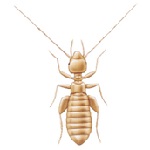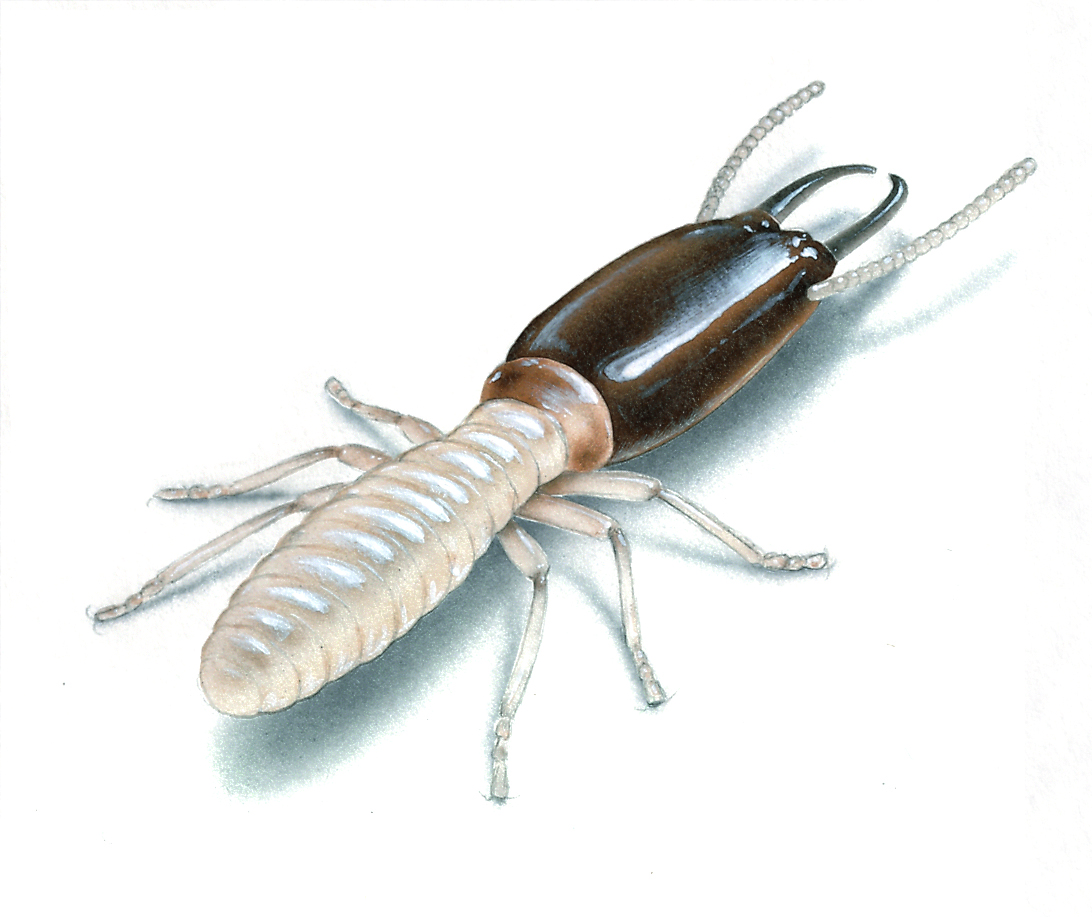We are all familiar with the difficulties of avoiding pest infestations in our homes and offices. All buildings are in need of pest control. Developed for the agricultural industry, Integrated Pest Management (IPM) systems have been adapted for use by a wide array of businesses, including museums and libraries. A tailored IPM program assists in protecting an institution’s cultural collections by incorporating the long-term, low-toxicity principles. The four basic steps of an IPM program are: prevent, monitor, identify, and control.
Cracks in floors and walls should be filled to prevent pests from intering the building.
The single and most important step to any IPM program is prevention. While traditional pest control methods that aim to treat current pest infestations, an IPM program aims to prevent pest infestations in the first place. The goal is to minimize and eliminate the sources that pests need to live. In order to prevent pests from entering the building you must eliminate what is drawing them to the area. The first task is to block all entry routes into the area. Examine the exterior and interior of the building looking for cracks and/or holes in the building structure, and gaps around windows and doors. When located, these areas should be filled, or door sweeps installed, to prevent pests from entering the building. Do not overlook the building’s plumbing or drains. Pests can enter structures through basement drains and little used plumbing. Also take notice of water sources around the exterior; identify leaks and/or condensation around plumbing, windows, or climate control equipment. Unnecessary vegetation and trash from around the exterior or inside of the building should be disposed of. Removing trash and debris on a regular basis helps to reduce the resources pests need for nesting.
Sticky traps allow for regular monitoring of pests in a given area.
The least expensive and easiest way to monitor for pest infestations is to simply look for them. A regular and systematic monitoring system should be created to protect our cultural heritage. One way to monitor pest activity, is to use a “sticky” trap. Sticky traps are inexpensive and easy to conceal. The sticky glue is capable of immobilizing any flying or crawling bug that touches it. Use a map of your building to choose locations throughout to place the traps. Traps should be placed in each corner of every room and more should be placed within large spaces. Do not forget to place traps in attics, basements, and any other area that may attract pest activity. Once the trap locations have been chosen, number and date the traps. Develop a regular schedule such as once a month or every quarter to monitor and lay down fresh traps. Create a pest log book and record and quantify the catches on each trap. The logbook will keep a record of which traps see the most pest activity throughout the year or during the seasons. As you discover patterns in pest activity, you can remove traps in inactive areas or add traps to areas where new activity is discovered.
Once you have recorded pest activity in the logbook, identify the type and life stage of each pest. Common damaging pests found in collections are silverfish, book lice, termites, clothes moths, and beetles. These insects prefer warm, dark, humid environments. By lowering the relative humidity, you may be able to affect the insect’s development or cause death by desiccation. Keep areas clean and free of old papers, boxes, or old foodstuffs. Regular vacuuming, with special attention to edges of the room, is especially important. These pests are very small, some measuring less than 1/8″ in length.


Silverfish (left) and book lice (right) primarily eat starches and plant-based items like paper, fabrics, and cereals.


Termites feed on wood and wood products containing cellulose.

Clothes moth and their larvae will eat wool, feathers, fur, hair, leather, lint, dust, paper, and occasionally cotton, linen, silk, and synthetic fibers.

The common carpet beetle is attracted to plant and animal substances such as wool, fur, feathers, hair, hides, horns, silk, velvet, felts and bone as well as seeds, grain, cereals, cake mixes, red pepper, rye meal and flour.

Drugstore beetles infest a large variety of substances especially starches in dried plant and animal products. They may chew through furniture fabrics, books, and other similar materials. The drugstore beetle can be found anywhere near food.

Furniture beetles (or powder post beetles) spend many months or years inside wood in the larvae state. When they emerge from the wood during the spring as adults, they leave small, pin sized exit holes with small amounts of sawdust, known as frass, surrounding the infested object.
The final step in a successful Integrated Pest Management program is control. After an infestation is discovered and the pest is identified a treatment plan should be created to target that specific pest. Passive methods include caulking around windows and doors, filling all cracks and holes in the building, placing traps on drain pipes, maintaining a clean structure, preventing nest building, and keeping humidity low. Pest infestations can also be controlled through inert methods such as spraying silica gel around the edges of the room or through freezing.
If you are unsure of the type of pest infestation your institution is experiencing, contact a local entomologist, the local county extension agency, or a professional pest control contractor. You can also find more information in our Integrated Pest Management Guide.
The pest images in this post are from: https://museumpests.net/identification/identification-pest-fact-sheets/



